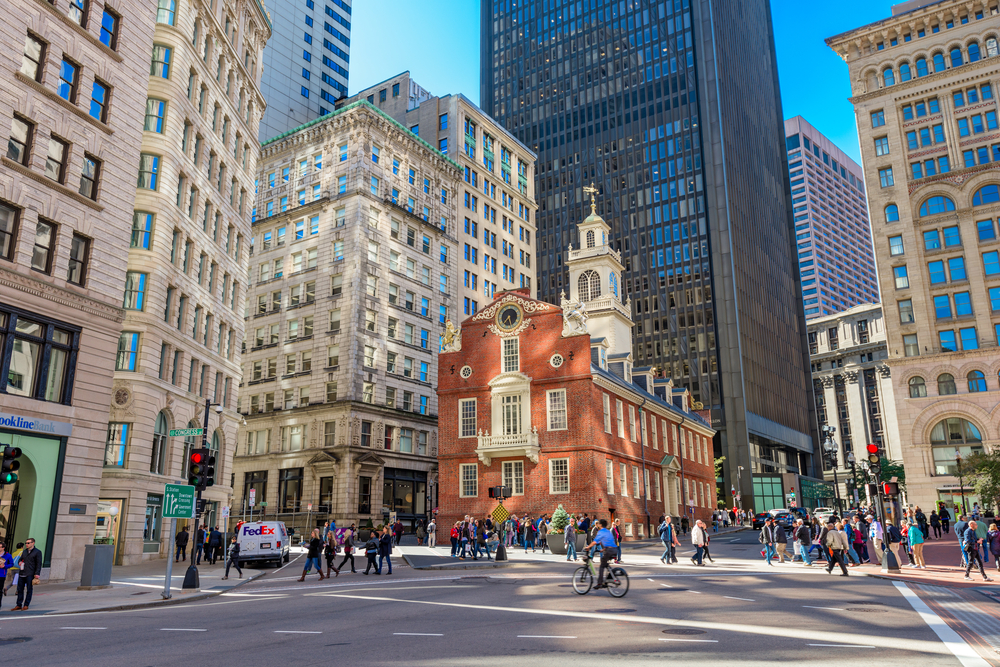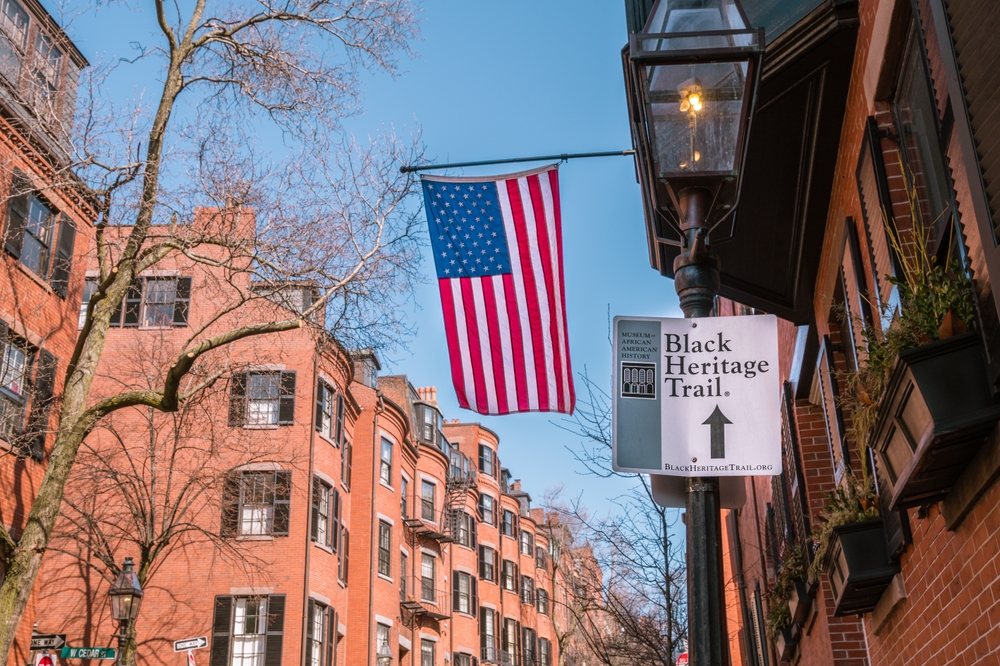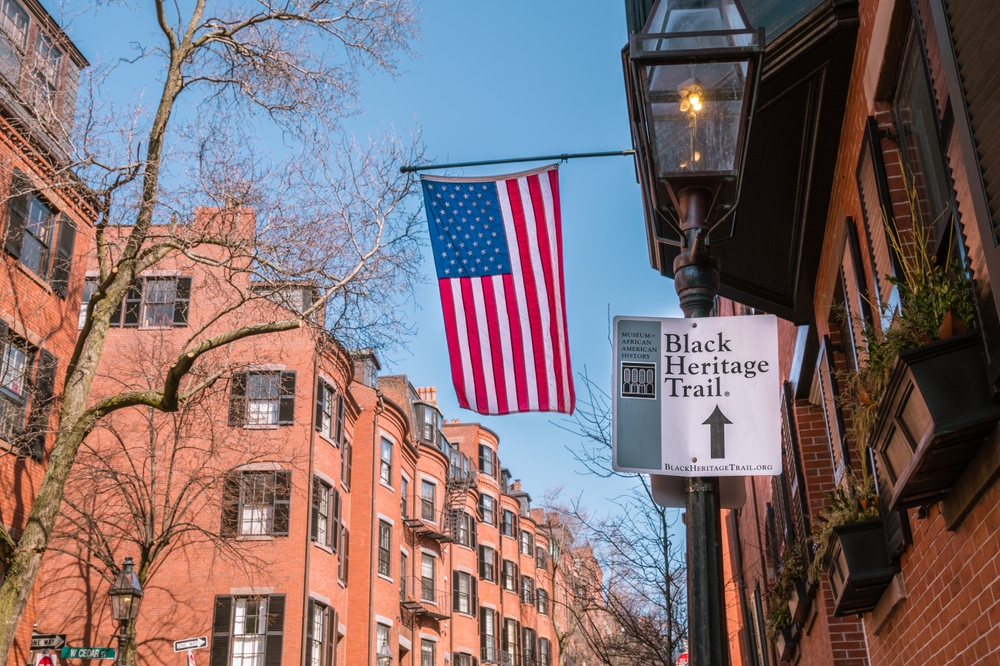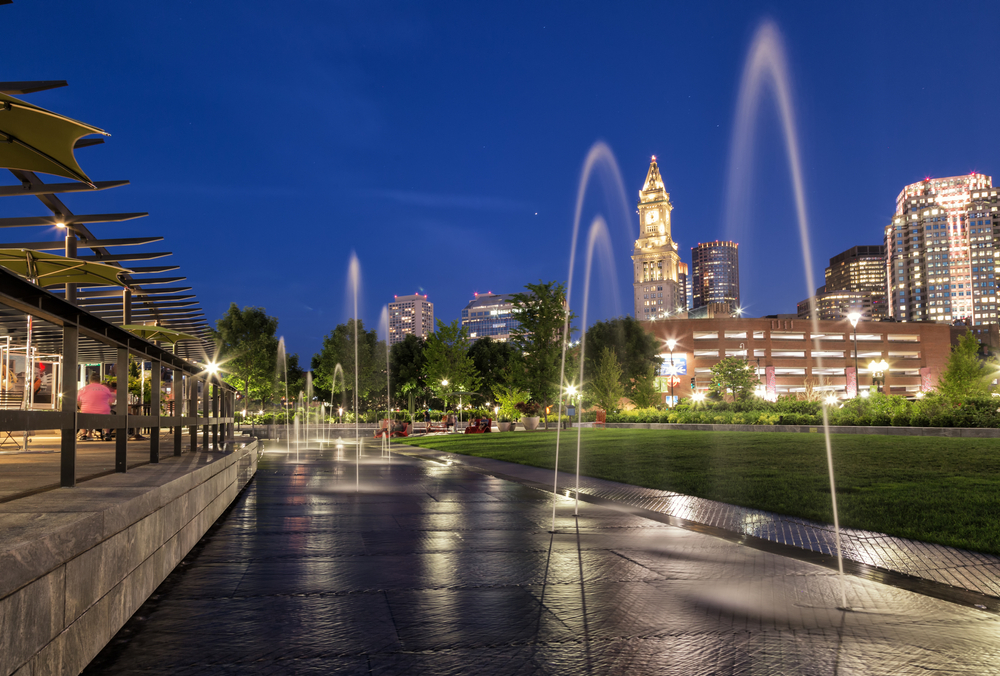The Freedom Trail in Boston, Massachusetts, is a 2.5-mile-long path through downtown Boston that passes by 16 locations significant to the history of the United States. Marked largely with brick, it winds from Boston Common in downtown Boston to the Bunker Hill Monument in Charlestown. The Freedom Trail is not just a line connecting historical sites; it is a gateway to the story of the American Revolution and beyond, offering visitors an immersive experience into the nation’s founding.
History
The idea for the Freedom Trail was conceived by local journalist William Schofield in 1951. Recognizing the need to preserve Boston’s historical heritage and make it accessible to the public, Schofield proposed linking the city’s various historical sites with a pedestrian trail. The concept was quickly supported by city officials, and the Freedom Trail was officially established in 1953.
The trail encompasses sites that played a pivotal role from the early days of colonization through the tumultuous years leading up to the American Revolution and the founding of the United States. As visitors walk the trail, they are walking the same streets where the Sons of Liberty proclaimed their defiance against British rule and where pivotal thinkers shaped the ideas of American independence.
Facts
- Length: The Freedom Trail is 2.5 miles long.
- Historical Sites: It features 16 official historic sites, including museums, churches, meeting houses, burial grounds, parks, a ship, and historic markers.
- Visitors: The trail attracts over 4 million visitors annually.
- Significance: It’s a physical and metaphorical link to the United States’ struggle for freedom and independence.
Location
The Freedom Trail begins at Boston Common, America’s oldest public park, and winds its way through the city to the USS Constitution and Bunker Hill Monument in Charlestown. Along the way, it passes through historic neighborhoods such as Beacon Hill and the North End.
Website
The official website for the Freedom Trail, which provides detailed information on the sites, tours, and history, can be found at www.thefreedomtrail.org.
Opening Hours
The Freedom Trail itself is a public walkway and is always open. However, the historic sites along the trail have varying operating hours. Many are open from 9:00 am to 5:00 pm daily, but visitors should check the official website or the specific site’s website for the most accurate and current information.
Things to Do
Guided Tours
Guided tours offered by Freedom Trail Foundation’s 18th-century costumed guides provide a narrated, immersive experience. The tours typically cover different sections of the trail and focus on various historical themes.
Visit Historical Sites
Each site on the Freedom Trail offers a unique glimpse into the past. Notable stops include the Paul Revere House, the Old North Church, the Massachusetts State House, and the Old South Meeting House.
Attend Reenactments
Several sites and organizations along the trail host historical reenactments, allowing visitors to witness key events from Revolutionary Boston come to life.
Explore Museums
The trail includes several museums, such as the Boston Tea Party Ships & Museum and the Old State House Museum, featuring interactive exhibits and historical artifacts.
Pay Respects
Visitors can pay respects at historic burial grounds like the Granary Burying Ground and the King’s Chapel Burying Ground, resting places of famous historical figures.
Tips For Visiting
- Wear Comfortable Shoes: Since the Freedom Trail covers 2.5 miles of city walking, comfortable footwear is a must.
- Start Early: Begin your day early to avoid crowds and have more time at each site.
- Check the Weather: Boston’s weather can be unpredictable; dress appropriately.
- Download or Pick Up a Map: A map of the Freedom Trail, available online or at the visitor center in Boston Common, will help guide your journey.
- Consider a Guided Tour: For an informative and engaging experience, consider joining a guided tour.
- Plan for Breaks: There are plenty of spots to rest and eat along the trail. Plan your breaks accordingly.
- Visit the Restrooms When Available: Not all sites have public restrooms, so use facilities when you see them.
- Be Mindful of Operating Hours: Check the hours of specific sites to ensure they are open during your visit.
- Purchase a Combination Ticket: If you plan to visit several sites that charge admission, a combination ticket can save money.
- Stay Charged: If you’re using a smartphone for navigation or information, ensure it’s fully charged or bring a portable charger.
Conclusion
The Freedom Trail in Boston is more than just a walk through historic landmarks; it’s an educational journey through the heart of the American narrative. It offers an engaging experience that connects visitors with the people,ideas, and events that shaped the nation. Whether you’re a history buff, a family seeking an educational experience, or a visitor wanting to experience the essence of Boston, the Freedom Trail is a must-visit attraction that offers a rich tapestry of America’s past stitched into the modern urban landscape of Boston. It’s not only a testament to the city’s central role in the founding of the United States but also a tribute to the spirit of freedom that continues to inspire generations.







